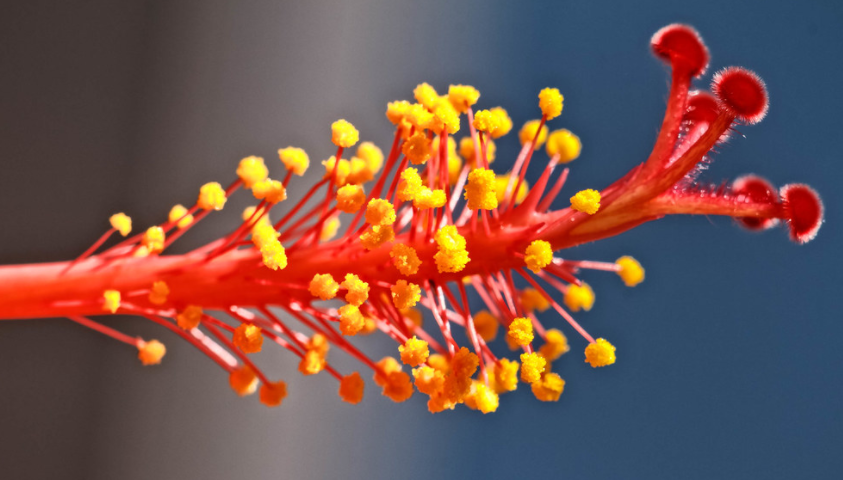
What is meant by monadelphous stamens?
Answer
509.7k+ views
Hint: The stamens are considered the most important part of the flower because it represents the male reproductive organs. The flowering plants can be monadelphous like Crotalaria. When all of the filaments are fused into a single tube, it is called monadelphous, as seen in Malvaceae & Oxalidaceae.
Complete answer:
- Monadelphous stamens are the condition of flowers in which all the filaments of the stamens are united into a single bundle to form a tube-like structure but anthers remain free.
- The term “adelphous” is a (Greek) word that means “brother or male relative.
- The monadelphous androecium is seen in the family Malvaceae. Examples are Hibiscus Gossypium and Althea.
- The main function of the stamen is to produce the pollen grains, which represents male gametes, or sex cells, necessary for reproduction.
Additional information:
When the filaments are fused in two groups, it is called diadelphous, as in the family Fabaceae, such as Astragalus, where nine filaments are fused and one is separate. When filaments are fused in more than two groups, it is called polyadelphous. Examples are Hypericaceae, Rutaceae, and Myrtaceae.

Diagram: In this diagram the stamen of Hibiscus is shown which belongs to the Malvaceae family. It shows the monadelphous condition of stamens.
Note: All the stamens (indefinite in number) in these flowers are united by their filaments (in the basal region) to form a staminal tube. The tips of filaments are free and they bear anthers. The style passes through the staminal tube and emerges out of it to bear stigmas. The monadelphous condition results in a flower with a large central column that bears many anther sacs.
Complete answer:
- Monadelphous stamens are the condition of flowers in which all the filaments of the stamens are united into a single bundle to form a tube-like structure but anthers remain free.
- The term “adelphous” is a (Greek) word that means “brother or male relative.
- The monadelphous androecium is seen in the family Malvaceae. Examples are Hibiscus Gossypium and Althea.
- The main function of the stamen is to produce the pollen grains, which represents male gametes, or sex cells, necessary for reproduction.
Additional information:
When the filaments are fused in two groups, it is called diadelphous, as in the family Fabaceae, such as Astragalus, where nine filaments are fused and one is separate. When filaments are fused in more than two groups, it is called polyadelphous. Examples are Hypericaceae, Rutaceae, and Myrtaceae.

Diagram: In this diagram the stamen of Hibiscus is shown which belongs to the Malvaceae family. It shows the monadelphous condition of stamens.
Note: All the stamens (indefinite in number) in these flowers are united by their filaments (in the basal region) to form a staminal tube. The tips of filaments are free and they bear anthers. The style passes through the staminal tube and emerges out of it to bear stigmas. The monadelphous condition results in a flower with a large central column that bears many anther sacs.
Recently Updated Pages
Master Class 12 Business Studies: Engaging Questions & Answers for Success

Master Class 12 Economics: Engaging Questions & Answers for Success

Master Class 12 English: Engaging Questions & Answers for Success

Master Class 12 Maths: Engaging Questions & Answers for Success

Master Class 12 Social Science: Engaging Questions & Answers for Success

Master Class 12 Chemistry: Engaging Questions & Answers for Success

Trending doubts
What are the major means of transport Explain each class 12 social science CBSE

Which are the Top 10 Largest Countries of the World?

Draw a labelled sketch of the human eye class 12 physics CBSE

How much time does it take to bleed after eating p class 12 biology CBSE

Explain sex determination in humans with line diag class 12 biology CBSE

Differentiate between homogeneous and heterogeneous class 12 chemistry CBSE




